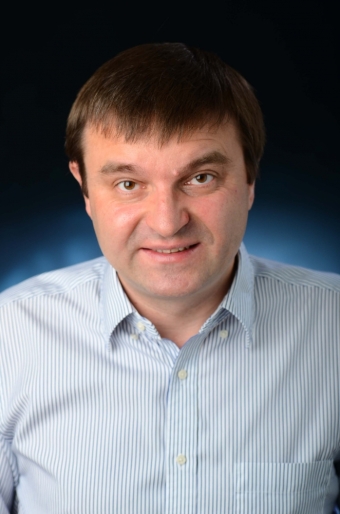
Date:
Location:
Title:
abstract
A state of matter uniquely close to both biological and inanimate highly technological worlds, liquid crystals will never go out of fashion. Widely known for their uses in displays and electrooptic devices, liquid crystals once made our laptops and smartphones both portable and affordable. However, technological utility of the liquid crystalline order goes well beyond displays. For example, lyotropic liquid crystals allow for templating mesoporous ordered structures useful for applications such as water purification, sensing and catalysis.
Could liquid crystals also help with solving a challenging global problem of inefficient energy use contributing to the growing energy demand and climate change? Heating, ventilation and conditioning of buildings account for about 15% of the global energy consumption, but about 20% of this energy is simply lost because of inefficient windows. Greenhouse emissions due to producing and using this energy accelerate the global climate change. Is there a solution to this problem? I will describe our development of visibly transparent, but thermally super-insulating mesoporous aerogels that may replace or retrofit the inefficient windowpanes. I will show how production of such aerogels using waste is aided by bacteria and liquid crystal templating to make them both affordable and super-transparent, as needed for applications in windows of buildings.
However, liquid crystals are more than just technological marvels. They are also a textbook from which one can learn about the inner workings of our World. I will therefore also describe how they reveal the topology and structure of knotted fields, similar to the ones arising in field theories in the areas ranging from particle physics to cosmology. In liquid crystals, however, such solitonic and vortex knots can self-organize into adaptive three-dimensional crystals, exhibit giant electrostriction and mimic active matter when supplied with energy. I will discuss their topology and emergent collective behavior, as well as how they could enable novel multi-stable display modes and data storage.
bio
Ivan I. Smalyukh is a full professor at the Department of Physics at CU-Boulder, which he joined in 2007 (promoted from Assistant to Associate Professor in 2014 and from Associate to Full Professor in 2017). He is also a founding fellow of Renewable Sustainable Energy Institute (a joint institute of CU-Boulder and NREL) and Materials Science Engineering Program. He directs the Soft Matter Physics Research Group at CU-Boulder with 34 research group members (PhD and undergraduate students, postdocs and visiting scholars). Prof. Smalyukh’s research focuses on soft condensed matter, materials and biological systems, including liquid crystals, colloids, polymers, bacteria, gels, biomaterials and their photonic, electro-optic and energy-related applications. He published ~200 peer-refereed articles, including 7 in Nature and Science. He is an elected fellow of the American Physical Society. He received many awards, including the Bessel and Glenn Brown Awards, NASA iTech award and Mid-Career Award of International Liquid Crystal Society, the PECASE Award from the Office of Science and Technology of the White House and the GSoft Award from the American Physical Society.
Hosted by Omar Saleh. Download event flyer.



